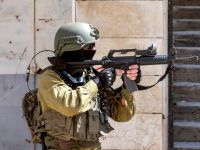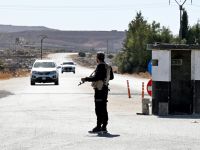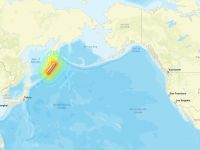A senior aide to Osama bin Laden who is on U.S. President George W. Bush's most-wanted list of international terrorists for allegedly helping plan the 1998 bombings of two U.S. embassies in East Africa has been captured in Sudan, senior Bush administration officials confirmed.
Officials in the United States have been negotiating for more than a month with the Sudanese government to have Abu Anas al Liby transferred to Egypt because he also allegedly participated in planning an attempted assassination of Egyptian President Hosni Mubarak in 1995, said an official familiar with the talks, according to The Washington Post.
Al Liby is the most senior al Qaeda member to be arrested since Washington launched its global war on terrorism. He is the first person captured alive among Bush administration's most wanted terrorists. U.S. authorities have a warrant for al Liby's arrest, however seem willing to have him transferred to Egypt.
As the most senior official of al Qaeda in custody, Liby would potentially be an extremely useful source on information about suspected terror mastermind Osama bin Laden's terrorist network, The Post added.
Al Liby's arrest was first disclosed by The Sunday Times of London. It reported he was one of nine terrorists arrested by the Sudanese government last month and is the subject of discussions with U.S. officials.
However, a top Sudanese official, Presidential adviser Ghazi Salah Din, told reporters, "We in the government do not have any knowledge of this and I do not think that this is correct", but U.S. government officials confirmed his arrest as well as U.S. negotiations with the Sudanese government.
Abu Anas al Liby
Born and raised in Tripoli, capital city of Libya, 37-year-old al Liby joined the al Qaeda organization in the late 1980s or early 1990s. At around that same time, following a crackdown on Muslim extremists by Libyan President Moammar Gaddafi, al Liby escaped Libya and headed to Sudan, where Osama bin Laden had established a beachhead.
His technical expertise, especially in the field of computers and high-tech gadgetry quickly made him Bin Laden’s computer expert. He soon earned a place on al Qaeda's ruling council, or shura.
He later left Sudan before bin Laden's departure for Afghanistan in 1996, moving to Qatar before settling in Manchester, England. The British government granted him political asylum after he expressed a fear of persecution if sent back home.
After he was indicted two years ago in New York in connection with the 1998 bombings of the American embassies in Nairobi and Tanzania, British law enforcement authorities sought to arrest him, but found he had escaped, the Washington Post said.
British Special Branch agents found incriminating evidence at his home, though, including a comprehensive terrorist manual recorded on a computer disk. U.S. Attorney General John D. Ashcroft has described the document as "a how-to guide for terrorists that instructs enemy operatives in the art of killing in a free society."
The manual was introduced as evidence in the trial stemming from the Nairobi embassy bombing that killed 213 people, including 12 Americans. Some of the sections included in the manual explain how to kidnap enemy personnel, spread rumors, write statements which instigate people against the enemy as well as blast and destroy embassies.
“It contains instructions on how to use forged documents, how to prepare cover stories if detained by police and how to act if jailed”, namely, complain of being mistreated while in prison.
Meanwhile, terrorism experts claim al Liby had made his way to Afghanistan, where he apparently helped lead at least the early stage of al Qaeda's resistance to U.S. military operations, which began on October 7th late last year. It is still unclear when he traveled to Sudan.
Two former al Qaeda operatives who testified in the Kenya embassy bombing trial last year worked with Liby, according to court testimony. L'Houssiane Kherchtou, who was in Kenya in 1994, studying to be a pilot for bin Laden's private aircraft, said that he had been in Afghanistan training with Liby in surveillance techniques.
In 1994, al Liby traveled to Nairobi with camera equipment, Kherchtou testified. He added that al Liby was accompanied by their former surveillance instructor, Ali Mohamad, an Egyptian American who pleaded guilty to participation in planning the embassy bombings.
Kherchtou testified that he saw Liby once some 400 yards from the U.S. Embassy taking pictures, and that Liby developed them while in Kherchtou's Nairobi apartment.
Pictures had been a major part of the al Qaeda planning for terrorist bombing attacks, according to Jamal Ahmed Fadl, the second former al Qaeda member who testified at the bombing trial.
Fadl, who worked in Sudan for Osama bin Laden during the early 1990s, also knew al Liby during that time. He said Liby used computers and taught others how to put surveillance information collected on computers and transfer the data to disks. (Albawaba.com)
© 2002 Al Bawaba (www.albawaba.com)







